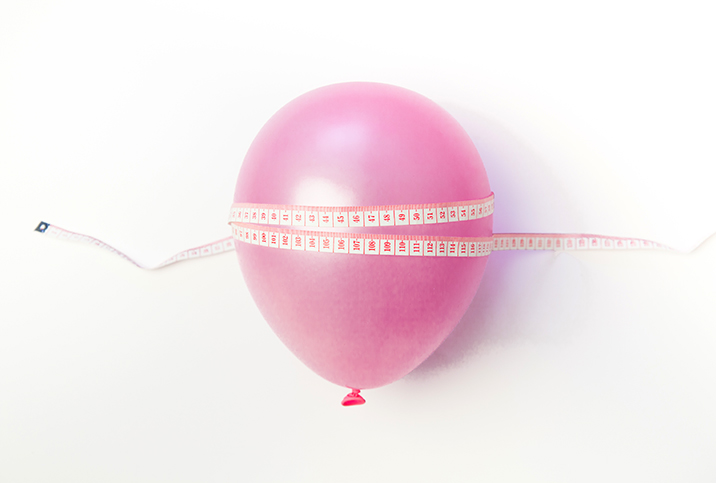The Pros and Cons of the Gastric Balloon for Weight Loss

The possibilities for surgical weight loss have literally ballooned over the past few decades. Compared to gastric banding, gastric sleeves or gastric bypass surgeries, the gastric balloon is a less invasive procedure promising similar results. But does it live up to the hype? Here are some factors to consider when considering your options.
How the gastric balloon works
The gastric balloon, sometimes called an intragastric balloon, is a silicone medical device placed in the stomach and filled with saline. By taking up space in the stomach, the gastric balloon helps patients feel full with smaller portions. The effect is like other types of weight loss procedures, which either surgically reduce the stomach size (gastric sleeve) or restrict its volume by wrapping a band around it (gastric banding).
Two companies produce FDA-approved gastric balloons available in the United States. It takes about 30 minutes for a gastrointestinal surgeon or endoscopist to place the balloon in the stomach by entering through the mouth. An anesthesiologist will provide sedation during the procedure, but it's performed in an outpatient setting, with most patients heading home just 1-2 hours after.
Benefits of the gastric balloon
After insertion of the gastric balloon and with healthy practices in place, patients can expect to lose 30-47 percent of their excess body weight. With weight loss and careful management of healthy habits, the following health conditions also tend to improve:
- Acid reflux
- High blood pressure and cholesterol
- Non-alcoholic fatty liver disease
- Osteoarthritis
- Sleep apnea
- Type 2 diabetes
The gastric balloon doesn't require any incisions. It can be a useful and effective weight loss tool when other methods don't work. For patients with heart issues who can't or don't want to use prescription weight-loss medications, the gastric balloon offers a non-surgical tool to control appetite and get a handle on weight-related health issues.
Risks and potential complications
The gastric balloon is a relatively new procedure, so it's unlikely to be covered by health insurance. After six months, the balloon needs to be removed. Like most weight-loss approaches, a commitment to behavioral therapy and lifestyle changes is required for long-term success.
Although the gastric balloon is considered "non-surgical," it's not without risk. Due to patient deaths (mainly related to gastric perforations or a hole in the stomach), the FDA issued a labeling alert to warn the public about potential dangers. Other risks and possible complications include:
- Infection
- Nausea and vomiting
- Pain in back, stomach or abdominal area
- Digestion issues
As with any procedure, finding an experienced and qualified surgeon is essential for patient safety. During your consultation, your doctor will evaluate the risks and benefits to help you make an informed decision.
Getting the gastric balloon is just one part of a comprehensive weight-loss program. Dietary guidance and resources will help you make the most of the procedure. Once the balloon is removed, ongoing monitoring and support are essential components for sustained health benefits.


















